TREAT YOUR ASH TREES
BEFORE IT’S TOO LATE.
It’s easy to take trees for granted, since they seemingly just stand there. In fact, trees in our urban forests planted in parks, along streets and in our yards are environmental superheros. They cool us off on hot summer days, capture and store carbon from the air, reduce the amount of chemicals in our stormwater, reduce human healthcare costs, improve our overall wellbeing, provide habitat for birds and pollinators, and generally improve whatever landscape they call home.
Cities all over America turned to the ash tree as a solution to replace elm trees lost to Dutch elm disease, only for a new threat to emerge and threaten the very trees they planted to replace the afflicted elms: the emerald ash borer (EAB).
Research has shown that when trees die from EAB, people also die.
An analysis by U.S. Forest Service scientists estimated that trees in the urban areas of Minnesota removed 4,600 tons of pollutants from the air and that this resulted in $26.7 million in reduced health care costs. Another recent U.S. Forest Service analysis showed that the spread of EAB across 15 states was associated with an additional 15,000 deaths.
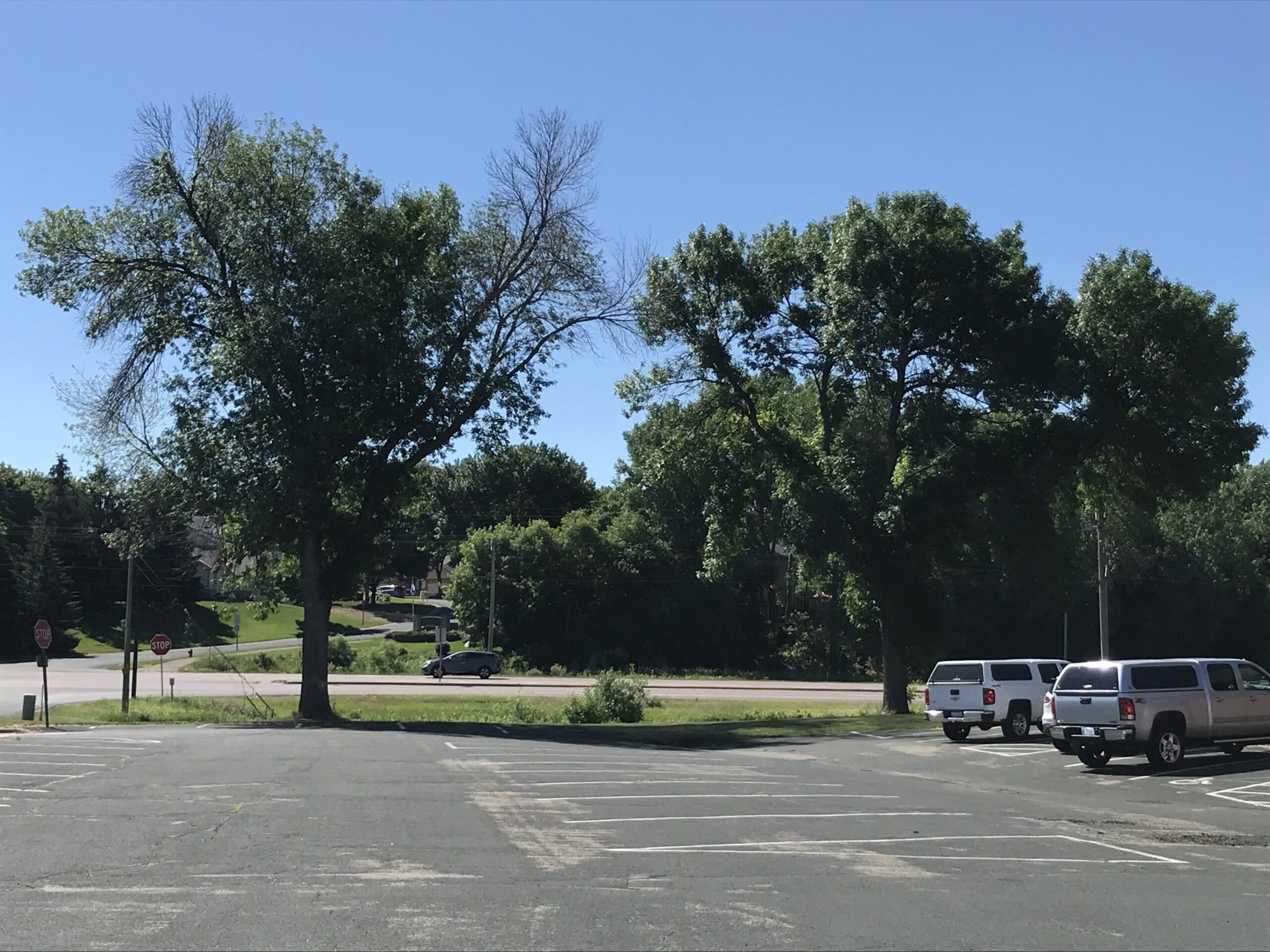
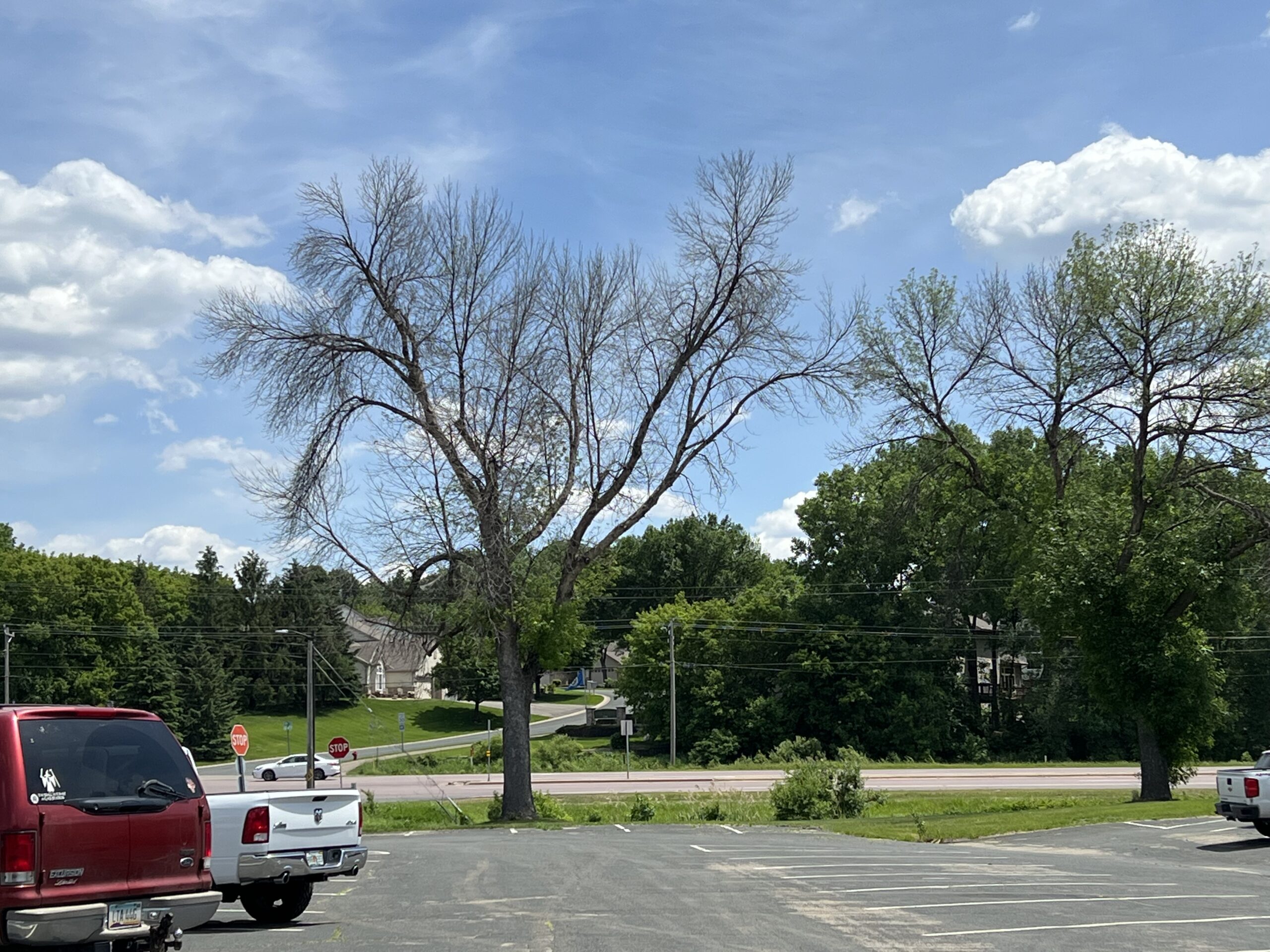
use the slider to see what damage EAB can do in one year. Photos by Faith Appelquist
The truth is that every single one of Minnesota’s estimated three million ash trees in our cities and towns, backyards and playgrounds, will eventually fall victim to EAB if left untreated. The invasive beetle kills an average of 35 million trees per year in the United States. 35 million carbon storing, energy bill reducing, stormwater absorbing, human health improving trees lost. Since the first discovery of EAB in the Detroit area in the early 2000s, science has advanced considerably. An ash tree can survive EAB if treated every other year with a trunk-injected insecticide. If we decide to do nothing to reduce the impact of EAB on our urban forests, it will have a significant, negative impact on our climate. In fact, not making a decision on EAB mitigation is the same as choosing to let the trees die. It will take decades to replace the benefits that these large shade trees once provided to our state.
What You Can Do
We can stave off this catastrophe. Just as vaccines help inoculate humans against diseases, insecticides injected into ash tree trunks every two years have the power to help save the tree species from extinction.
For those who have already started treatments, it is important to continue them every two years in order to maintain protection against EAB.
We must also plant a diverse slate of other tree species to ensure our urban forests are never over-planted by one tree type.
Our duty as Minnesotans to protect the state’s green spaces does not begin in any specific region of the state. It begins everywhere the ash tree calls home – throughout the land of 10,000 lakes.
Frequently Asked Questions
This was the original thinking at the start of the infestation, but the strategy was a failure. It wastes resources to remove and replace healthy mature trees, destroys public investments in green infrastructure, and impacts human health. An analysis by U.S. Forest Service scientists concluded that “the spread of EAB across 15 states was associated with an additional 15,000 deaths from cardiovascular disease and an additional 6,000 deaths from lower respiratory disease.”
Furthermore, other studies show that a removal-only strategy is ineffective at slowing the spread, it may even increase it because the beetles can just fly further to find host trees. We now know that the most effective strategy is to reduce the number of beetles, not their ubiquitous food supply. (Once EAB has been found in or near a community, it is important to remove poor condition ash that cannot be treated in populated areas such as parks so they do not become a safety risk to the public as they die.)
Trees are the only urban infrastructure that increases in value as it ages. Just as with grey infrastructure, green infrastructure investments—including trees—require maintenance to preserve the benefits over their expected lifespan. However, unlike a sewer line replacement, for example, it can take 30 years before the annual benefit of a replacement tree matches that of a mature ash tree removed because of EAB.
Each public tree injection is about $150-200 per tree for two years of protection, and in most instances, treatment can be conducted over a 20-year period and still cost less than tree removal, stump grinding and replanting. In general, a large stature shade tree provides a net $4,400 benefit to the community during its lifetime in cooling and cleaning the air, catching and filtering stormwater, carbon dioxide uptake, saving energy, and providing higher property values.
The good news is that compared to the old strategy of just removing and replacing the trees (at enormous cost to our environment), an integrated pest management approach is available. This approach includes protecting healthy trees with pesticide treatments and preserves the tree canopy and tree value over 20 years, at half the cost. As one national expert said, “There is no reason for a landscape ash tree to die from emerald ash borer anymore.”
An ash tree can store up to 4 tons of carbon over the course of its life — more than the weight of an average pickup truck!
The ash tree is often tagged with a metal medallion on the street side of the tree. Most cities keep a list on file of the locations of the ash trees they are injecting . It is important to call your city to check, however, since there are other reasons that a tree may have a tag on it.
The tag signifies the ash tree has been injected to prevent/treat EAB. It does NOT mean the tree has been “tagged” with EAB. Putting a physical marker on the tree ensures the correct tree will be re-treated in future years. Please refrain from removing tags.
The EAB insecticide is injected inside the tree trunk at the base of the tree, so there is no need to restrict access to the tree like you might have to with traditional lawn treatments (which are sprayed onto the soil). FAQ on Potential Side Effects of EAB Insecticides
The general rule of thumb is that you can save a tree from certain death if 30% or less of the canopy is affected. Look at your tree and observe the current dieback and woodpecker activity.
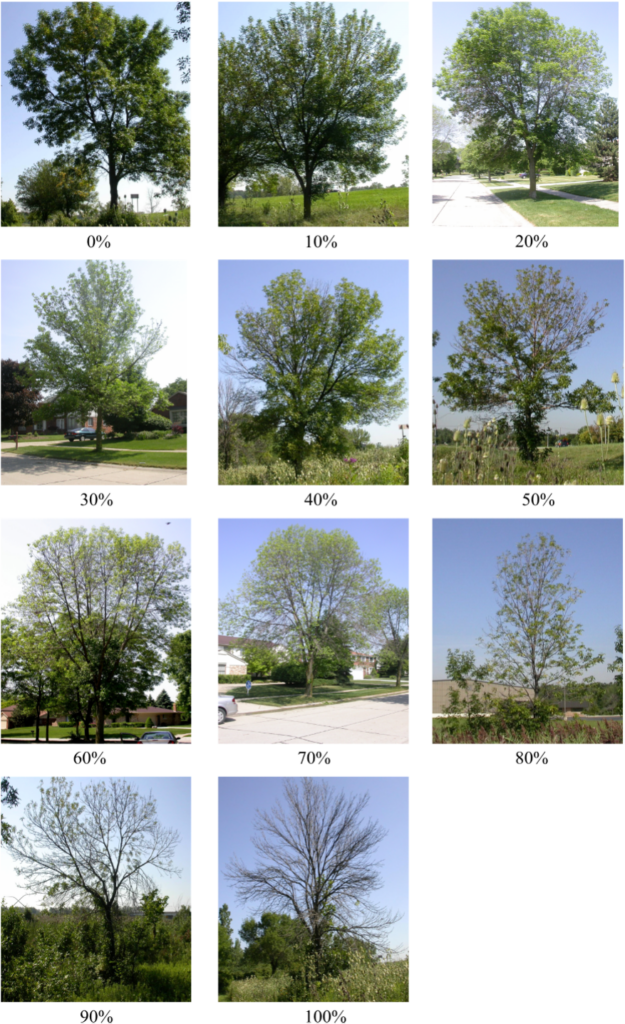
Smitley, David & Davis, Terrance & Rebek, Eric. (2008). Progression of Ash Canopy Thinning and Dieback Outward from the Initial Infestation of Emerald Ash Borer (Coleoptera: Buprestidae) in Southeastern Michigan. Journal of economic entomology. 101. 1643-50.
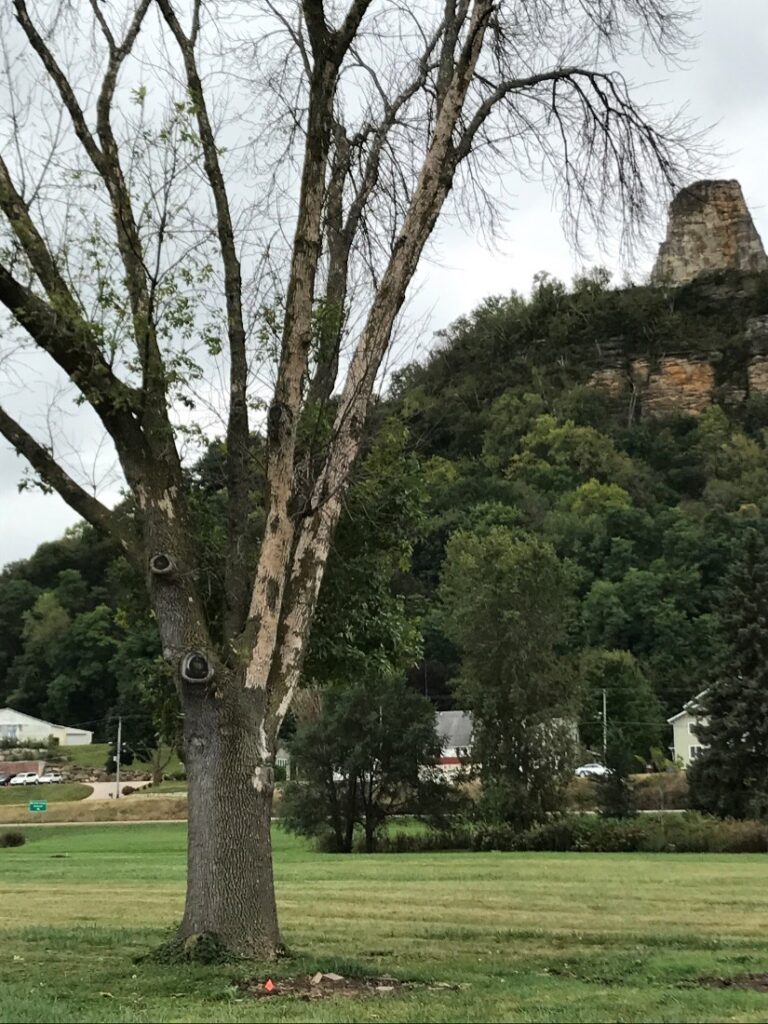
Is there still enough canopy for you to value the tree? The injections won’t bring back the dead/dying branches but will kill off insects living in the trees and prevent further infestation. If you aren’t sure, ask an ISA Certified Arborist to inspect your tree, and know that there will be some follow up pruning involved if your tree has already started to dieback.
Each city has their own criteria, which is driven by the number of ash trees the community has, the budget they have access to and the EAB Plan that has been proposed by staff and approved by city leadership, city councils and mayors. One rule of thumb is to inject boulevard and park ash trees with a stem (trunk) diameter 10 inches and larger that are in fair or good health and condition. Since tree injection is an investment in the tree, some factors for evaluation are looking for obvious defects in the branch architecture, decay in the main stem, and general loss of vigor. It is important to evaluate site conditions such as future planned construction, presence of overhead powerlines or other infrastructure that conflict with a healthy canopy.
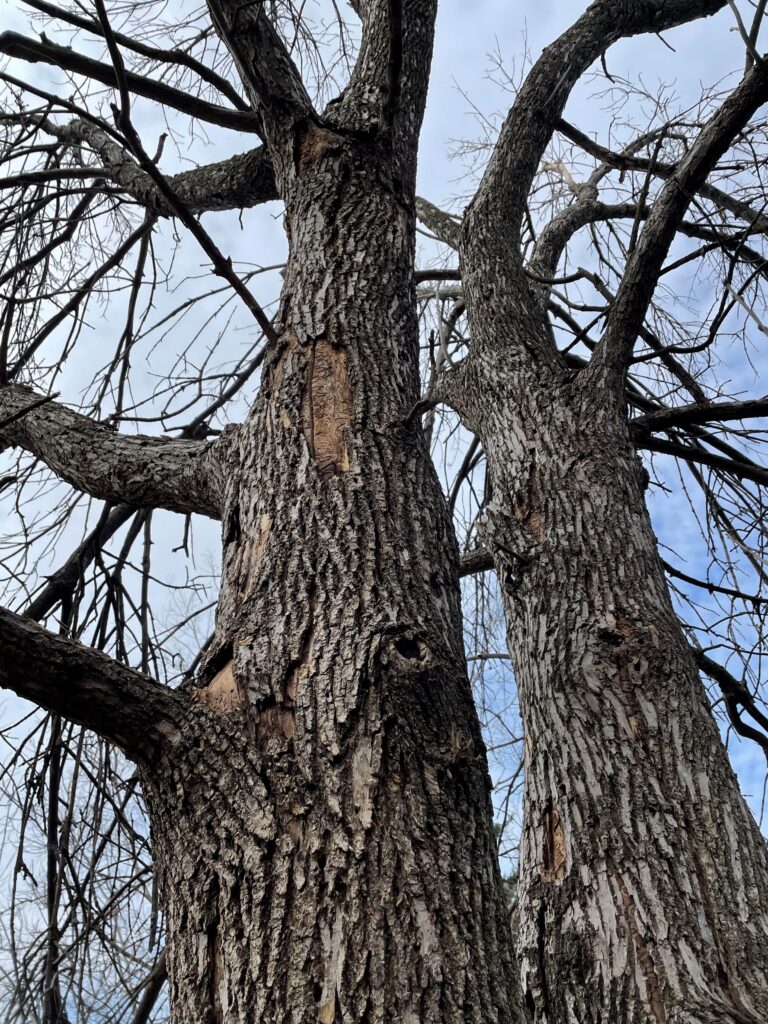
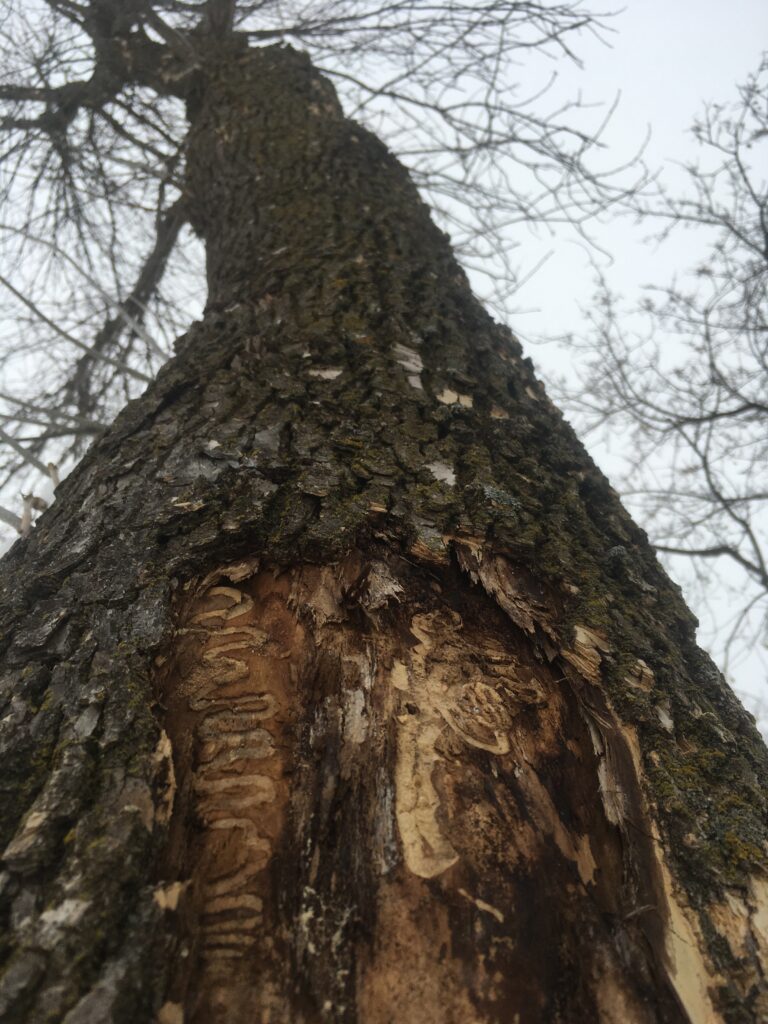
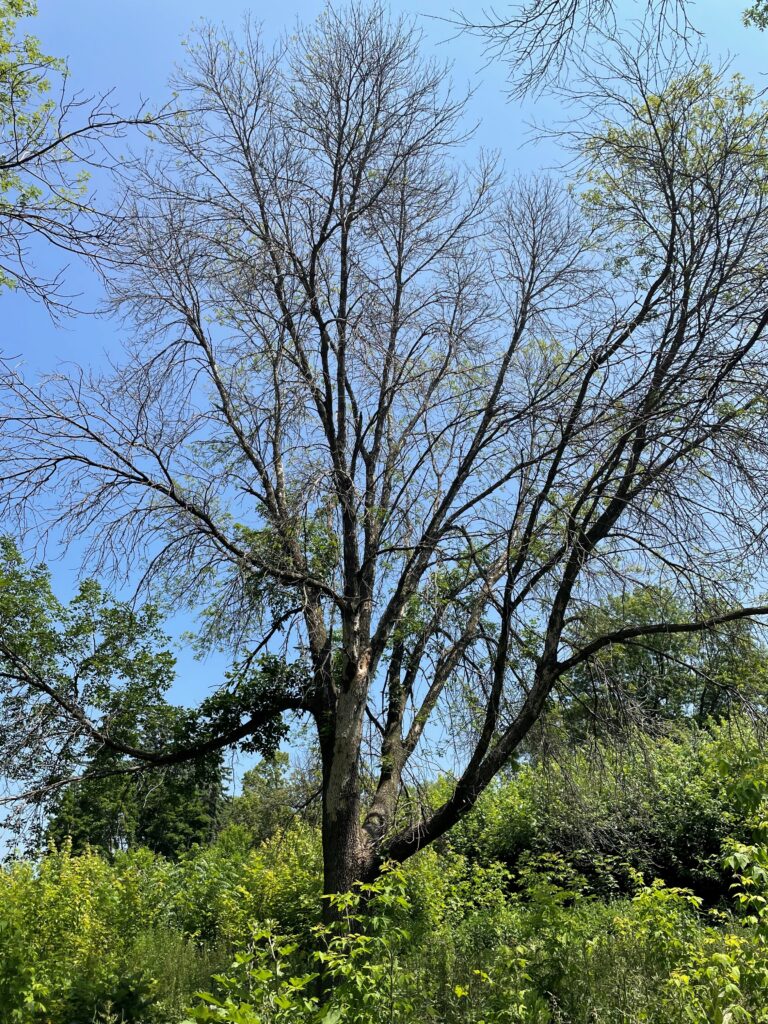
This was the original thinking at the start of the infestation, but the strategy was a failure. It wastes public resources to remove and replace healthy trees, destroys public investments in green infrastructure, and impacts human health. An analysis by U.S. Forest Service scientists concluded that “the spread of EAB across 15 states was associated with an additional 15,000 deaths from cardiovascular disease and an additional 6,000 deaths from lower respiratory disease.”
Furthermore, other studies show that a removal-only strategy is ineffective at slowing the spread, it may even increase it because the beetles can just fly further to find host trees. We now know that the most effective strategy is to reduce the number of beetles, not their ubiquitous food supply.
Trees are the only urban infrastructure that increases in value as it ages. Just as with grey infrastructure, green infrastructure investments—including trees—require maintenance to preserve the benefits over their expected lifespan. However, unlike a sewer line replacement, for example, it can take 30 years before the annual benefit of a replacement tree matches that of a mature ash tree removed because of EAB.
Each public tree injection is about $150-200 per tree for two years of protection, and in most instances, treatment can be conducted over a 20-year period and still cost less than tree removal, stump grinding and replacement. In general, a large stature shade tree provides a net $4,400 benefit to the community during their lifetime in cooling and cleaning the air, catching, and filtering stormwater, saving energy, and providing higher property values.
The best news is that compared to the old strategy of just removing and replacing the trees, an integrated pest management approach that includes protecting healthy trees with pesticide treatments preserves about four times as much of the tree canopy and tree value over 20 years, and it costs half as much. Treatments not only preserve public trees and dollars, but they also help protect untreated private ash trees that are nearby. As one national expert said, “There is no reason for a landscape ash tree to die from emerald ash borer anymore.”
An ash tree can store up to 4 tons of carbon over the course of its life — more than the weight of an average pickup truck!
The ash tree is often tagged with a metal medallion on the street side of the tree. Most cities keep a list of locations they are injecting ash trees on file. It is important to call your city to check, however, since there are other reasons that a tree may have a tag on it.
The tag signifies the ash tree has been injected to prevent/treat EAB. It does NOT mean the tree has been “tagged” with EAB. Putting a physical marker on the tree ensures the correct tree will be re-treated in future years. Please refrain from removing tags.
The EAB insecticide is injected inside the tree trunk at the base of the tree, so there is no need to restrict access to the tree like you might have to with traditional lawn treatments (which are sprayed onto the soil). FAQ on Potential Side Effects of EAB Insecticides
The general rule of thumb is that you can inject a tree if 30% or less of the canopy is affected. Look at your tree and observe the current dieback and woodpecker activity. Is there still enough canopy for you to value the tree? The injections won’t bring back the dead/dying branches but will kill off insects living in the trees and prevent further infestation. If you aren’t sure, ask an ISA Certified Arborist to inspect your tree.
Each city has their own criteria, which is driven by the number of ash trees the community has, the resources they have access to and the EAB Plan that has been proposed by staff and approved by city leadership, city councils and mayors. One rule of thumb is to inject boulevard and park ash trees with a stem (trunk) diameter 10 inches and larger that are in fair or good health and condition. Since tree injection is an investment in the tree, some factors for evaluation are looking for obvious defects in the branch architecture, decay in the main stem, and loss of vigor. It is important to evaluate site conditions such as future planned construction, presence of overhead powerlines or other infrastructure that conflict with a healthy canopy.
Woodpecker activity: Woodpeckers fleck off outer darker bark to reveal lighter bark beneath and create dime-sized holes while looking for EAB larvae (worm-like immature stage before it matures to a beetle). This is also referred to as “blonding.”
Bark splits: Larvae tunneling under the bark cause it to split open on branches and trunks. Often you can see the tunnels or galleries when looking at bark splits with binoculars.
Crown dieback: The larvae disrupt the flow of water and nutrients causing branches to die.